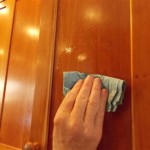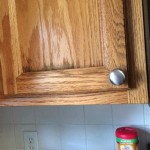Can You Paint Kitchen Cabinet Door Hinges? A Detailed Guide
The question of whether kitchen cabinet door hinges can be painted is a common one during kitchen remodeling or refurbishment projects. While painting hinges might seem like a straightforward way to refresh the look of cabinets, the process is more nuanced than simply applying a coat of paint. The feasibility and advisability of painting hinges depend on several factors, including the hinge material, the desired aesthetic outcome, and the tolerance for potential functional issues. This article provides a comprehensive overview of the considerations involved in painting kitchen cabinet door hinges.
Kitchen cabinet hinges are generally manufactured from various metals, including steel, brass, nickel, and sometimes even alloys. The choice of material affects the durability, resistance to corrosion, and overall lifespan of the hinge. However, it also influences how well paint will adhere to the surface. Smooth, polished metal surfaces typically offer less grip for paint, increasing the likelihood of chipping or scratching over time. Furthermore, the finish applied to the hinge, such as a lacquer or plating, can further complicate the painting process. Understanding the composition and finish of the hinge is crucial before proceeding with any painting endeavor.
The decision to paint hinges often stems from a desire to achieve a specific aesthetic. Matching the hinge color to the cabinet door or surrounding hardware can create a cohesive and unified look. Alternatively, painting hinges a contrasting color might be used to create a visual accent. However, it's important to consider the long-term durability of the painted finish. High-use hinges are subject to constant friction and stress, which can quickly degrade the paint layer, leading to an unsightly appearance. Therefore, carefully evaluating the desired aesthetic impact against the potential for wear and tear is essential.
Beyond aesthetics, the functionality of the hinge must also be considered. Hinges are precision-engineered components designed to operate smoothly and silently. Applying paint to the hinge can alter its tolerances, potentially affecting its ability to open and close properly. Excess paint buildup can create friction, causing squeaking or binding. In extreme cases, it can even prevent the door from closing completely or damage the hinge mechanism. Therefore, meticulous preparation and application techniques are necessary to minimize the risk of functional impairment.
Key Point 1: Surface Preparation is Paramount
Proper surface preparation is the most critical step in ensuring a successful paint job on kitchen cabinet door hinges. Insufficient preparation will almost certainly lead to paint failure, resulting in chipping, peeling, and an overall unsatisfactory result. The preparation process involves several distinct stages, each playing a crucial role in creating a suitable surface for paint adhesion.
The first step is to thoroughly clean the hinges. This can be accomplished using a degreasing cleaner and a scrub brush to remove any dirt, grease, oil, or other contaminants that might be present on the surface. These contaminants can prevent the paint from adhering properly, leading to premature failure of the finish. It is important to rinse the hinges thoroughly with clean water and allow them to dry completely before proceeding to the next step.
Once the hinges are clean, they need to be scuffed to create a slightly rough surface. This provides the paint with something to grip onto, greatly improving adhesion. Fine-grit sandpaper, typically in the range of 220 to 320 grit, is ideal for this purpose. The goal is not to remove the existing finish entirely, but rather to create a subtle texture that will promote paint bonding. It's important to sand evenly and consistently across the entire surface of the hinge.
After sanding, the hinges should be wiped down with a tack cloth to remove any sanding dust. Even small amounts of dust can interfere with paint adhesion, so it's essential to ensure the surface is completely clean before applying primer. A tack cloth is a specialized type of cloth that is treated with a slightly sticky substance that attracts and traps dust particles.
Finally, applying a metal-specific primer is crucial. Primers are designed to create a strong bond between the metal surface and the paint. They also provide a uniform base for the paint, helping to ensure consistent color and coverage. Choose a high-quality primer specifically formulated for use on metal surfaces, and follow the manufacturer's instructions carefully regarding application and drying times.
Key Point 2: Selecting the Right Paint Type
The type of paint used on kitchen cabinet door hinges significantly influences the durability and longevity of the finish. Not all paints are created equal, and choosing the wrong type can lead to premature wear and tear, requiring frequent touch-ups or even complete re-painting. Factors to consider when selecting paint include adhesion, durability, resistance to chipping and scratching, and compatibility with the primer used.
For metal surfaces, specialized paints designed for metal are generally recommended. These paints often contain additives that promote adhesion to metal surfaces and provide enhanced protection against rust and corrosion. Alkyd paints, also known as oil-based paints, are a traditional option for metal surfaces. They offer excellent durability and resistance to chipping and scratching, but they can be more difficult to work with than other types of paint. They also have a longer drying time and require the use of mineral spirits for cleanup.
Acrylic latex paints are a more modern alternative to alkyd paints. They are easier to apply, have a faster drying time, and can be cleaned up with soap and water. However, they may not be as durable as alkyd paints, and they may require multiple coats to achieve adequate coverage. When using acrylic latex paint on metal, it's essential to choose a high-quality paint specifically formulated for use on metal surfaces.
Epoxy paints are another option for painting metal hinges. Epoxy paints are extremely durable and resistant to chemicals, abrasion, and impact. They are often used in industrial applications where a high level of protection is required. However, epoxy paints can be more difficult to apply than other types of paint, and they may require specialized equipment and techniques. They also tend to be more expensive than alkyd or acrylic latex paints.
Regardless of the type of paint chosen, it's essential to select a paint with a sheen level that is appropriate for the desired aesthetic. Matte finishes are less reflective and can help to hide imperfections, while gloss finishes are more reflective and can create a more dramatic look. Semi-gloss or satin finishes are a good compromise, offering some reflectivity while still being relatively easy to clean.
Key Point 3: Application Techniques and Precautions
Even with proper surface preparation and the right paint, the application technique can significantly impact the final result. Applying paint too thickly can lead to drips, runs, and an uneven finish. Applying paint too thinly can result in poor coverage and a lack of durability. Careful attention to detail and the use of appropriate tools are essential for achieving a professional-looking finish.
When painting small and intricate objects like kitchen cabinet door hinges, spray painting is often the preferred method. Spray paint provides a smooth, even coat of paint with minimal brushstrokes. It also allows for easier access to tight corners and crevices. Aerosol spray cans are a convenient option for small projects, but for larger projects, a spray gun connected to an air compressor may be more efficient.
Regardless of the spray method used, it's essential to apply the paint in thin, even coats. Multiple thin coats are always better than one thick coat. Allow each coat to dry completely before applying the next. This will help to prevent drips, runs, and other imperfections. It will also ensure that the paint adheres properly to the surface.
If spray painting is not an option, a small brush can be used to apply the paint. Choose a high-quality brush with soft bristles that will not leave brushstrokes. Apply the paint in thin, even strokes, and avoid over-brushing. Over-brushing can cause the paint to become streaky and uneven.
Before painting, it's essential to protect the surrounding area from overspray or drips. Use masking tape and drop cloths to cover any surfaces that you don't want to be painted. It's also important to work in a well-ventilated area to avoid inhaling paint fumes. Wear a respirator mask to protect your lungs, and wear gloves to protect your hands.
Finally, after the paint has dried completely, carefully inspect the hinges for any imperfections. Touch up any areas that need it, and allow the touch-up paint to dry thoroughly. Once the paint is completely dry and cured, re-install the hinges on the cabinet doors. Be careful not to scratch or damage the painted finish during re-installation.
In summary, while painting kitchen cabinet door hinges is possible, it demands diligent preparation, selection of appropriate materials, and careful application. Ignoring these factors can lead to unsatisfactory results and potential functional problems. Weighing the desired aesthetic outcome against the potential challenges and risks is crucial before embarking on this project.

The Case For Matching Hinges To Cabinet Color Bean In Love

I Painted The Hinges My Repurposed Life

Our Hopeful Home How To Spray Paint Cabinet Hardware Like A Pro

Can Exposed Kitchen Cabinet Hinges Be Painted

I Painted The Hinges Painting Cabinets Redo Kitchen Decor

Our Hopeful Home How To Spray Paint Cabinet Hardware Like A Pro

How To Paint Kitchen Cabinets A Step By Guide Confessions Of Serial Do It Yourselfer

Painting Our Kitchen Cabinets Mauve Young House Love

How To Quickly Clean And Update Your Old Cabinet Hinges Hometalk

How To Paint Door Hinges
Related Posts








